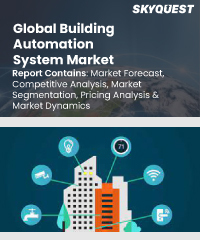
Report ID: SQMIG20B2052

Report ID:
SQMIG20B2052 |
Region:
Global |
Published Date: April, 2024
Pages:
202
|
Tables:
61 |
Figures:
75
The North America market accounted for the highest revenue in the global construction systems automation market by 2022. Furthermore, the key players in the region as well as the rising systems are expected to boost the market revenue in this region during the forecast period. For example, in May 2023, Honeywell and Arcadis announced their partnership to provide equipment and services to help address energy efficiency and carbon emissions in commercial buildings around the world, helping companies to jointly accelerate progress towards carbon reduction targets. A range will be delivered, with an initial focus on five projects in different locations around the world.
The Asia Pacific market is expected to register the fastest growth in revenue in the global BAM market during the forecast period. This is due to the need for centralized control and management and technological advancement in countries such as India, China, and Japan. For example, in March 2022, Hitachi Elevator Company Limited, a joint venture of Hitachi Elevator Company Limited, announced the establishment of Siam Motors Group, the sole sales and service company for elevator stairs in Thailand. Through this launch, these companies will offer buildings with physical biometrics, such as facial recognition and QR code recognition pricing, reducing physical contact between individuals, ensuring safe and secure traffic content, and contributing to a safe and comfortable working environment for employees and visitors.
Our industry expert will work with you to provide you with customized data in a short amount of time.
REQUEST FREE CUSTOMIZATIONWant to customize this report? This report can be personalized according to your needs. Our analysts and industry experts will work directly with you to understand your requirements and provide you with customized data in a short amount of time. We offer $1000 worth of FREE customization at the time of purchase.

Report ID: SQMIG20B2052